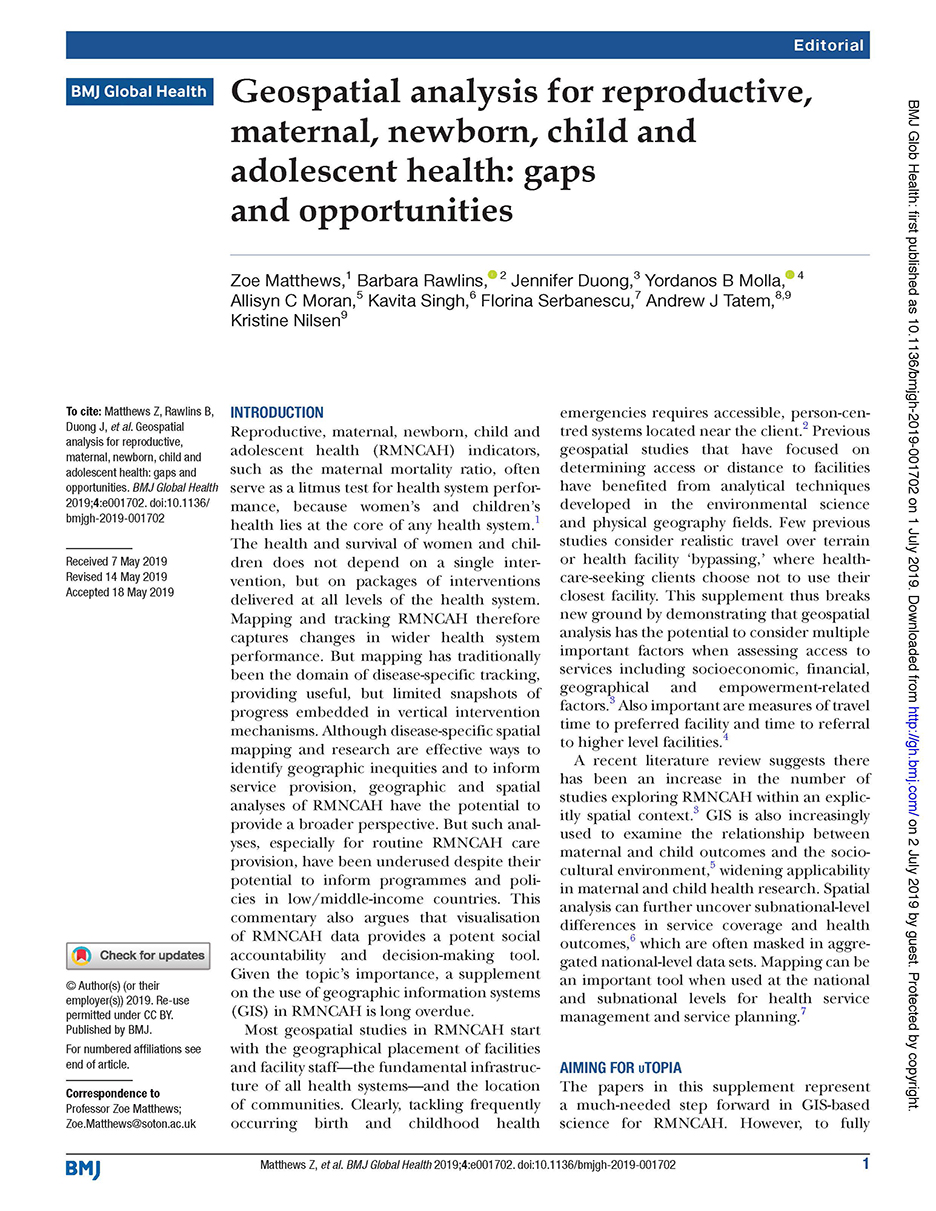Publish Date: June 2019
Author: MCSP and Partners
Supplement Editors: Kristine Nilsen and Andrew J. Tatem
The purpose of this journal supplement in BMJ Global Health is to document and share single and multi-country experiences of utilizing GIS to analyze and improve RMNCAH outcomes. We share practical examples of how geospatial analyses can be used to investigate barriers to care, understand patterns of mortality, morbidity and care, and facilitate planning and decision-making during resource allocation, intervention targeting and impact demonstration. The supplement presents case studies on the use of GIS for RMNCAH that have programmatic and policy relevance, both locally and globally. We aim to bridge the gap between RMNCAH programmatic practice and the latest research, by bringing together experts in the field and geospatial analyses to develop a set of methodologies that can be applied across multiple disciplines in the field.
The supplement is composed of one editorial, one commentary, four research papers and six practice papers. The editorial and commentary synthesize the current GIS situation and resources, cross-cutting findings and technical approaches, recommendations, and future directions for applying geospatial analyses to advance RMNCH programming and health outcomes.
Using Geospatial Modelling to Estimate the Prevalence of Adolescent First Births in Nepal
Practice
From Paper Maps to Digital Maps: Enhancing Routine Immunisation Microplanning in Northern Nigeria

